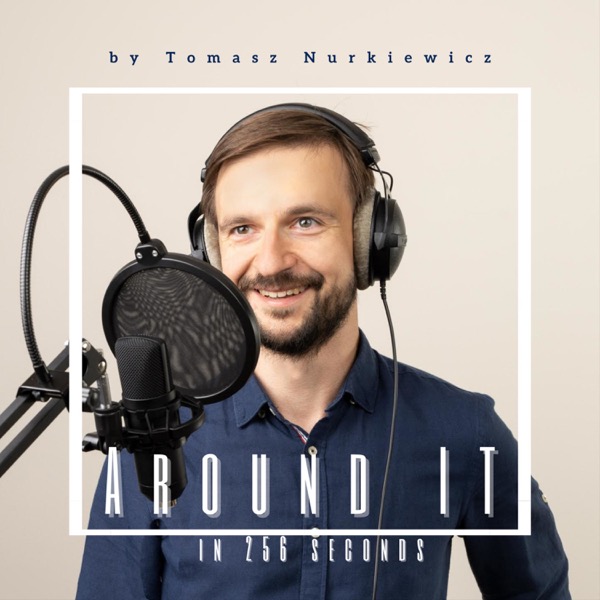Around IT in 256 seconds
Podcast autorstwa Tomasz Nurkiewicz
98 Odcinki
-
#97: Ruby: help every programmer to be productive and to be happy
Opublikowany: 13.02.2023 -
#96: Border Gateway Protocol: the duct tape that makes the Internet work
Opublikowany: 6.02.2023 -
#95: SQLite: the most ubiquitus database on the planet. And beyond!
Opublikowany: 23.01.2023 -
#94: Scala: language with academic background and huge industry adoption
Opublikowany: 16.01.2023 -
#93: K-means clustering: machine learning algorithm to easily split observations into multiple buckets
Opublikowany: 11.01.2023 -
#92: Clojure: a languages that will change the way you think about programming
Opublikowany: 28.11.2022 -
#91: Asynchronous communication: loose coupling in distributed systems
Opublikowany: 21.11.2022 -
#90: Mastodon: next-generation, open source social network
Opublikowany: 15.11.2022 -
#89: RabbitMQ: A proven message broker for asynchronous communication
Opublikowany: 12.10.2022 -
#88: SLI, SLO and SLA: a number, a threshold and a legal document respectively
Opublikowany: 3.10.2022 -
#87: Artificial neural networks: imitating human brain to solve problems like humans
Opublikowany: 27.09.2022 -
#86: Proof of stake: how to cut global energy usage by 0.2%
Opublikowany: 19.09.2022 -
#85: Genetic algorithm: natural selection helps to solve coding problems
Opublikowany: 13.09.2022 -
#84: Non-fungible token (NFT): digital, decentralized art market
Opublikowany: 29.08.2022 -
#83: Real-time bidding: how online tracking helps serving ads
Opublikowany: 23.08.2022 -
#82: MongoDB: the most popular NoSQL database
Opublikowany: 16.08.2022 -
#81: Quarkus: supersonic, subatomic Java (guest: Holly Cummins)
Opublikowany: 5.08.2022 -
#80: Ethereum: a distributed virtual machine for exchanging money and bored apes
Opublikowany: 4.07.2022 -
#79: QUIC: what makes HTTP/3 faster
Opublikowany: 30.06.2022 -
#78: Stuxnet: computer virus that you can admire
Opublikowany: 20.06.2022
Podcast for developers, testers, SREs... and their managers. I explain complex and convoluted technologies in a clear way, avoiding buzzwords and hype. Never longer than 4 minutes and 16 seconds. Because software development does not require hours of lectures, dev advocates' slide decks and hand waving. For those of you, who want to combat FOMO, while brushing your teeth. 256 seconds is plenty of time. If I can't explain something within this time frame, it's either too complex, or I don't understand it myself. By Tomasz Nurkiewicz. Java Champion, CTO, trainer, O'Reilly author, blogger
